Headlamp Bulb Replacement Halogen Headlamp
Removal Procedure
- Open the hood.
- Remove the headlamp capsule from the vehicle. Refer to Headlamp Capsule Replacement .
- Remove the access cover from the headlamp capsule.
- Compress and lift the headlamp bulb fastening tangs.
- Disconnect the electrical connection from the headlamp bulb.
Caution: Halogen bulbs contain gas under pressure. Handling a bulb improperly
could cause it to shatter into flying glass fragments. To help avoid personal
injury:
• Turn off the lamp switch and allow the bulb to cool before changing
the bulb. • Leave the lamp switch OFF until the bulb change is complete. • Always wear eye protection when changing a halogen bulb. • Handle the bulb only by its base. Avoid touching the glass. • Keep dirt and moisture off the bulb. • Properly dispose of the used bulb. • Keep halogen bulbs out of the reach of children.
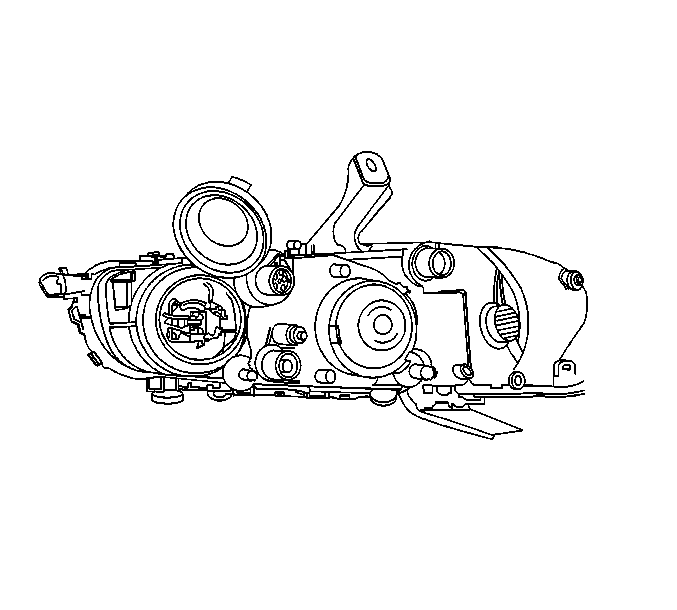
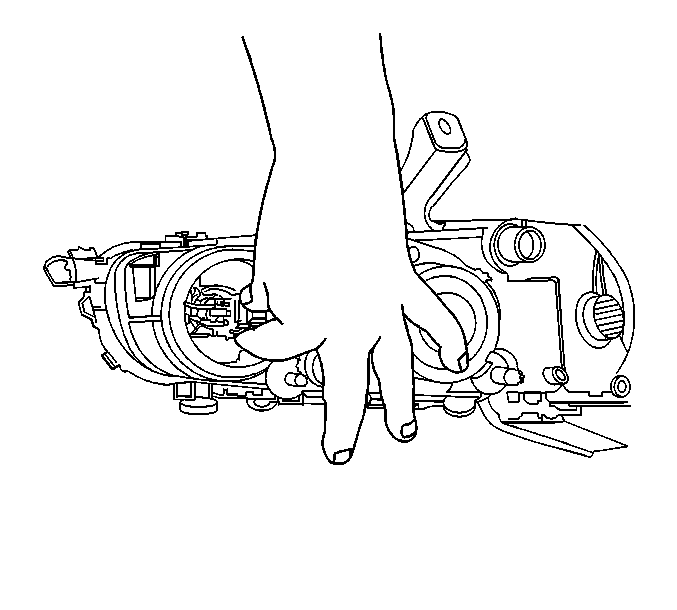
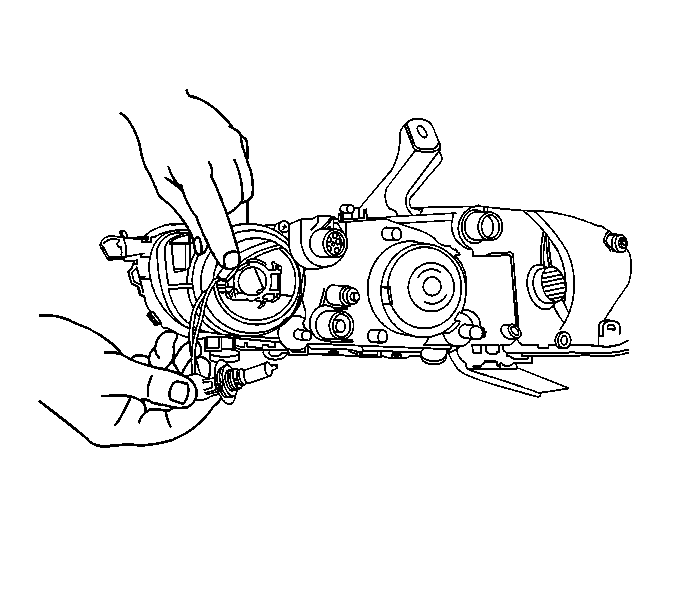
Remove the headlamp bulb from the headlamp capsule.
Installation Procedure
- Install the headlamp bulb to the headlamp capsule.
- Compress and install the headlamp bulb fastening tangs.
- Install the access cover to the headlamp capsule.
- Install the headlamp capsule to the vehicle. Refer to Headlamp Capsule Replacement .
- Close the hood.

Connect the electrical connection to the headlamp bulb.


Headlamp Bulb Replacement HID
Removal Procedure
- Disconnect the negative battery cable. Refer to Battery Negative Cable Disconnection and Connection in Engine Electrical.
- Remove the headlamp capsule. Refer to Headlamp Capsule Replacement .
- Remove the headlamp cover cap screws from the lamp cover cap (1).
- Slide the lamp cover cap with the high voltage cable grommet (4) away from the lamp socket.
- Remove the high voltage plug (3) from the lamp by rotating counterclockwise to disconnect.
- Remove the Xenon lamp fastening ring (1) by rotating counterclockwise and remove from the Xenon bulb.
- Remove the Xenon bulb (2) from the headlamp capsule.
Caution: The high intensity discharge system produces high voltage and current.
To reduce the risk of severe shocks and burns:
• Never open the high intensity discharge system ballast or the
arc tube assembly starter. • Never probe between the high intensity discharge system ballast
output connector and the arc tube assembly.
Caution: The high intensity discharge system produces high voltage and current. In order to reduce the risk of severe shocks and burns, the battery negative cable must be disconnected any time service work is being performed on or around the high intensity discharge system.
Caution: Unless directed otherwise, the ignition and start switch must be in the OFF or LOCK position, and all electrical loads must be OFF before servicing any electrical component. Disconnect the negative battery cable to prevent an electrical spark should a tool or equipment come in contact with an exposed electrical terminal. Failure to follow these precautions may result in personal injury and/or damage to the vehicle or its components.
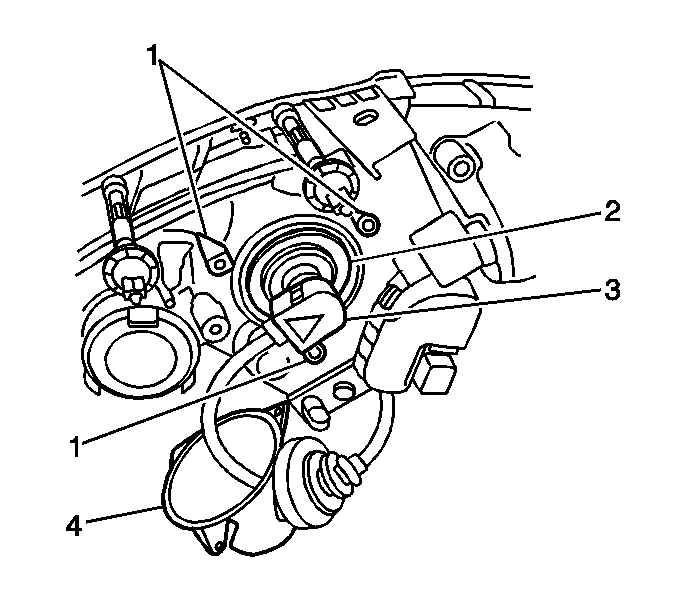
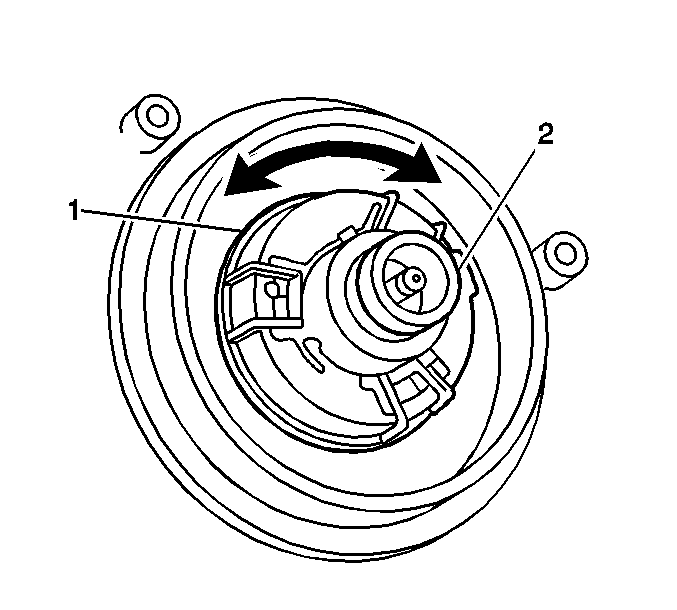
Installation Procedure
- Install the Xenon bulb (2) to the headlamp capsule.
- Install the Xenon lamp fastening ring (1) to the Xenon bulb and rotate clockwise to secure it to the headlamp capsule.
- Connect the high voltage plug (3) to the Xenon bulb by rotating clockwise.
- Slide the lamp cover cap with the high voltage cable grommet (4) to the lamp socket.
- Install the headlamp cover cap screws to the lamp cover cap (1).
- Install the headlamp capsule to the vehicle. Refer to Headlamp Capsule Replacement .
- Connect the battery negative cable. Refer to Battery Negative Cable Disconnection and Connection in Engine Electrical.


Notice: Use the correct fastener in the correct location. Replacement fasteners must be the correct part number for that application. Fasteners requiring replacement or fasteners requiring the use of thread locking compound or sealant are identified in the service procedure. Do not use paints, lubricants, or corrosion inhibitors on fasteners or fastener joint surfaces unless specified. These coatings affect fastener torque and joint clamping force and may damage the fastener. Use the correct tightening sequence and specifications when installing fasteners in order to avoid damage to parts and systems.
Tighten
Tighten the headlamp cover cap screws to 2 N·m (18 lb in).
